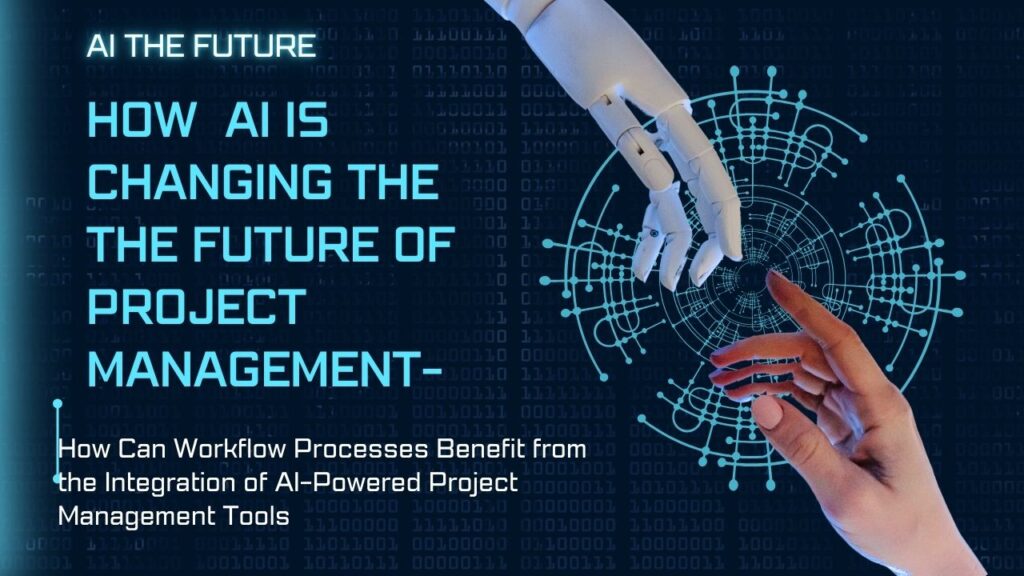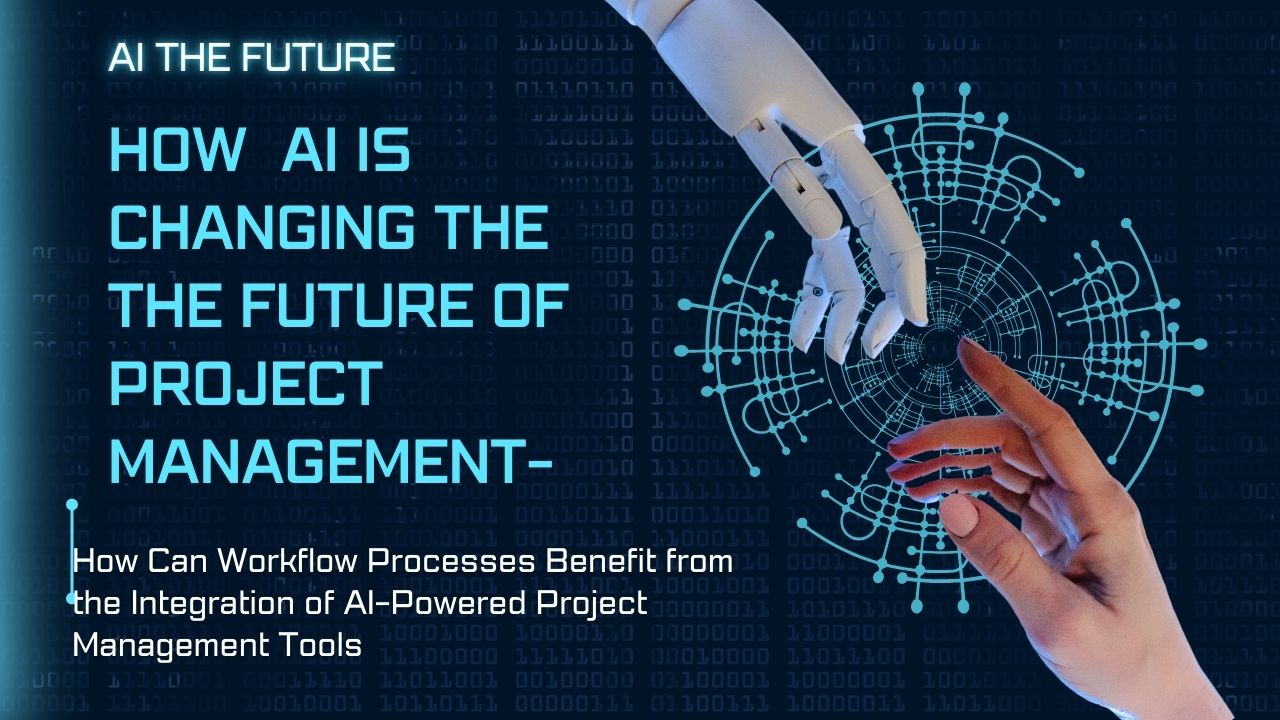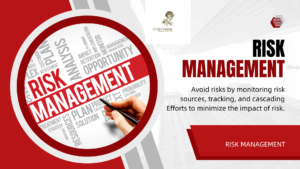Table of Contents
I. Introduction
Welcome to our exploration of AI-powered project management tools and their role in revolutionizing workflow processes. In today’s fast-paced business world, staying ahead of the curve is essential for success. With the advent of artificial intelligence (AI), project management has been taken to new heights, offering innovative solutions to streamline workflows and boost productivity.
Enhancing Project Efficiency: The Role of AI-Powered Project Management Tools
Welcome to a new era in project management, where cutting-edge technology is transforming the way we work. Today, we delve into the realm of AI-powered project management tools, exploring their potential to revolutionize workflow processes and drive efficiency to unprecedented levels.
A. Overview of AI-powered Project Management Tools
In the landscape of project management, AI-powered tools stand out as beacons of innovation and efficiency. These sophisticated solutions harness the capabilities of artificial intelligence to automate tasks, analyze data, and provide actionable insights, all with the aim of optimizing project workflows.
Consider, for instance, an AI-powered scheduling tool. This intelligent software takes the guesswork out of project planning by utilizing algorithms to generate optimized schedules based on factors such as resource availability, task dependencies, and historical performance data. The result? A streamlined and meticulously crafted project timeline that maximizes efficiency and minimizes bottlenecks.

B. Importance of Integrating AI into Workflow Processes
The integration of AI into workflow processes is not merely a luxury—it’s a strategic imperative in today’s fast-paced business environment. Here’s why:
- Unparalleled Efficiency: AI-powered project management tools excel at automating repetitive and time-consuming tasks, allowing team members to focus their energy on higher-value activities. By handling mundane tasks such as data entry, scheduling, and resource allocation, AI frees up valuable time and resources, enabling teams to work smarter, not harder.
- Data-Driven Decision Making: With AI at their disposal, project managers gain access to a wealth of data-driven insights that inform decision-making processes. By analyzing vast quantities of data and identifying patterns and trends, AI-powered tools empower project managers to make informed decisions that drive project success. Whether it’s predicting project risks, optimizing resource allocation, or identifying areas for improvement, AI provides the intelligence needed to steer projects in the right direction.
- Enhanced Collaboration: Collaboration lies at the heart of effective project management, and AI-powered tools are instrumental in facilitating seamless collaboration across teams and departments. Through features such as real-time communication, task assignment, and progress tracking, AI-powered collaboration platforms enable teams to work together more efficiently and effectively, regardless of geographical location or time zone.
In conclusion, AI-powered project management tools are indispensable assets in the modern project manager’s toolkit. By harnessing the power of AI to automate tasks, analyze data, and facilitate collaboration, project managers can unlock new levels of efficiency and productivity, ultimately driving project success in an increasingly competitive landscape.
Ready to elevate your project management game with AI-powered tools? Join us as we explore the possibilities and unlock the full potential of your projects.
II. Understanding Workflow Processes: Navigating the Path to Efficiency
In this section AI-Powered Project Management, we delve into the fundamentals of workflow processes, pinpoint common challenges in traditional workflow management, and underscore the critical need for optimization and efficiency improvement.
A. Defining Workflow Processes in Project Management
At its core, a workflow process in AI-Powered Project Management is a series of interconnected tasks and activities that are systematically executed to achieve predefined project objectives. It encompasses the entire lifecycle of a project, from initiation to closure, and involves the coordination of resources, communication channels, and deliverables.
To put it simply, workflow processes provide a roadmap for project teams, guiding them through the various stages of project execution and ensuring that tasks are completed in a logical and timely manner. By defining clear workflows, project managers can streamline project operations, minimize delays, and enhance overall efficiency.
B. Identifying Common Challenges in Traditional Workflow Management
Despite their importance of AI-Powered Project Management, traditional workflow management methods often face a myriad of challenges that hinder productivity and effectiveness. Some of the most common challenges include:
- Manual Processes: Many organizations still rely on manual processes for task assignment, progress tracking, and communication, leading to inefficiencies and errors.
- Lack of Visibility: Limited visibility into project workflows can make it difficult for project managers to identify bottlenecks, track progress, and allocate resources effectively.
- Communication Breakdowns: Poor communication channels can result in miscommunications, misunderstandings, and delays in project delivery, jeopardizing project success.
- Resource Overload: Inefficient resource allocation can lead to resource overloads, where team members are either underutilized or overwhelmed with work, impacting project timelines and quality.
C. The Need for Optimization and Efficiency Improvement
In today’s hyper-competitive business landscape, the need for optimization and efficiency improvement in workflow processes has never been more pressing. Organizations are under increasing pressure to deliver projects faster, cheaper, and with higher quality, necessitating a shift towards more streamlined and agile workflow management practices.
By optimizing workflow processes, organizations can:
- Enhance Productivity: Streamlining workflow processes minimizes downtime, reduces redundant tasks, and maximizes the productivity of project teams.
- Improve Collaboration: Clear and efficient workflows promote collaboration among team members, fostering a culture of transparency, accountability, and innovation.
- Increase Agility: Agile workflow processes enable organizations to adapt quickly to changing market conditions, customer requirements, and project priorities, ensuring that projects remain on track and aligned with strategic objectives.
In summary, in AI-Powered Project Management, understanding workflow processes is paramount to achieving project success. By defining clear workflows, identifying common challenges, and embracing optimization and efficiency improvement initiatives, organizations can unlock new levels of productivity, collaboration, and agility in project management.
Stay tuned as we delve deeper into the strategies and tools for optimizing workflow processes and maximizing project efficiency. The journey to project excellence begins here!
III. Introduction to AI-Powered Project Management Tools: Embracing the Future of Project Management
In this section, AI-Powered Project Management, we embark on an enlightening journey into the realm of AI-powered project management tools. We’ll explore the intricacies of AI technology in project management, examine the various types of AI-powered tools available, and uncover the myriad benefits of integrating AI into project management workflows.
A. Explanation of AI Technology in Project Management
Artificial Intelligence (AI) technology has emerged as a game-changer in project management, revolutionizing the way projects are planned, executed, and monitored. At its core, AI refers to the simulation of human intelligence processes by machines, enabling them to perform tasks that traditionally require human intervention.
In the context of project management, AI technology manifests in various forms, including machine learning, natural language processing, and predictive analytics. These AI-powered capabilities empower project managers to automate repetitive tasks, analyze vast amounts of data, and derive actionable insights to drive informed decision-making.
For instance, AI algorithms can analyze historical project data to identify patterns and trends, predict potential risks, and recommend optimization strategies. AI-powered chatbots can facilitate real-time communication among project team members, providing instant support and guidance whenever needed. In essence, AI technology serves as a virtual assistant for project managers, augmenting their capabilities and enhancing overall efficiency.
B. Types of AI-Powered Project Management Tools Available
The landscape of AI-powered project management tools is vast and diverse, offering a plethora of solutions to cater to different project management needs. Some common types of AI-powered tools include:
- AI-Powered Scheduling Tools: These tools leverage AI algorithms to optimize project schedules, taking into account factors such as resource availability, task dependencies, and project constraints.
- Predictive Analytics Platforms: Predictive analytics platforms use AI to analyze historical project data and forecast future trends, enabling project managers to anticipate potential risks and opportunities.
- AI-Powered Communication Platforms: AI-powered communication platforms facilitate seamless collaboration among project team members by providing features such as real-time chat, task assignment, and progress tracking.
- Virtual Assistants: Virtual assistants powered by AI technology act as personal assistants for project managers, automating routine tasks, scheduling meetings, and providing insights and recommendations based on project data.
- Decision Support Systems: AI-driven decision support systems help project managers make informed decisions by analyzing complex data sets and providing recommendations tailored to specific project scenarios.
C. Benefits of Using AI in Project Management Workflows
The incorporation of AI-Powered Project Management workflows presents a multitude of advantages, encompassing:
- Improved Efficiency: AI-powered tools automate repetitive tasks, streamline processes, and optimize resource allocation, enabling project teams to work more efficiently and productively.
- Enhanced Accuracy: AI algorithms analyze data with unparalleled accuracy, reducing the risk of errors and enabling project managers to make data-driven decisions with confidence.
- Better Decision-Making: AI technology provides project managers with valuable insights and recommendations, empowering them to make informed decisions that drive project success.
- Faster Innovation: By automating routine tasks and freeing up valuable time, AI-powered tools enable project teams to focus on innovation and creativity, driving continuous improvement and competitive advantage.
In conclusion, AI-powered project management tools represent the future of project management, offering unparalleled efficiency, accuracy, and innovation. By embracing AI technology, project managers can unlock new levels of productivity and success, propelling their projects to greater heights.
Join us as we delve deeper into the world of AI-powered project management tools, exploring best practices, case studies, and practical tips for integrating AI into your project management workflows. The future is bright, and AI is leading the way!
IV. Identifying Workflow Bottlenecks and Challenges: Paving the Way for Efficiency
In this section, we’ll delve into the process of identifying workflow bottlenecks and challenges, exploring how to analyze current workflow processes, pinpoint bottlenecks and pain points, and understand how AI can effectively address these challenges.
A. Analyzing Current Workflow Processes
The first step in identifying workflow bottlenecks and challenges is to conduct a comprehensive analysis of current workflow processes. This involves examining each step in the workflow, identifying the sequence of tasks, and understanding how information flows within the process.
For example, let’s consider a software development project. The current workflow involves multiple stages, including requirements gathering, design, development, testing, and deployment. By analyzing each stage of the workflow, project managers can identify inefficiencies, such as delays in the testing phase or communication breakdowns between team members.
B. Identifying Bottlenecks and Pain Points– AI-Powered Project Management
Once the current workflow processes have been analyzed, the next step is to identify bottlenecks and pain points that are hindering productivity and efficiency. Bottlenecks are points in the workflow where work accumulates, causing delays and disruptions to the overall process. Pain points, on the other hand, are areas of the workflow that are particularly challenging or problematic for project teams.
For instance, in the software development project mentioned earlier, a bottleneck may occur during the testing phase, where a limited number of testing resources are causing delays in identifying and fixing bugs. Pain points may include manual data entry tasks that are prone to errors or inefficient communication channels that result in miscommunication among team members.
C. Understanding How AI Can Address These Challenges-AI-Powered Project Management
AI holds tremendous potential for addressing workflow bottlenecks and challenges in project management. By leveraging advanced algorithms and machine learning capabilities, AI-powered tools can automate repetitive tasks, optimize resource allocation, and provide valuable insights to project managers.
For example, in the case of the software development project, AI-powered testing tools can automate the process of identifying and prioritizing bugs, allowing testing resources to be allocated more efficiently. AI-driven communication platforms can facilitate seamless collaboration among team members, reducing the likelihood of miscommunication and delays.
Additionally, AI-powered predictive analytics can analyze historical project data to identify patterns and trends, enabling project managers to anticipate potential bottlenecks and proactively address them before they impact project timelines. By harnessing the power of AI, project managers can streamline workflow processes, optimize resource utilization, and drive greater efficiency and productivity in project management.
In conclusion, identifying workflow bottlenecks and challenges is a critical step in optimizing project management workflows. By analyzing current processes, identifying bottlenecks and pain points, and leveraging AI-powered tools to address these challenges, project managers can pave the way for greater efficiency, productivity, and success in project management.
V. Selection and Implementation of AI Tools: A Strategic Approach-AI-Powered Project Management
In this segment, we’ll explore the crucial steps involved in selecting and implementing AI tools for project management. From researching and evaluating available options to seamlessly integrating chosen tools into existing workflows, let’s delve into the strategic process.
A. Researching and Evaluating AI-Powered Project Management Tools
The first step in selecting AI tools is thorough research and evaluation. This involves identifying available AI-powered project management tools, understanding their features and capabilities, and assessing how well they align with your organization’s specific needs and goals.
For instance, suppose you’re looking for a tool to optimize project scheduling. In that case, you might research AI-powered scheduling tools that utilize algorithms to optimize resource allocation, minimize project delays, and enhance overall efficiency.
During the evaluation process, consider factors such as user-friendliness, scalability, compatibility with existing systems, and customer support. Look for case studies, reviews, and testimonials from other organizations that have implemented the tools to gauge their effectiveness and suitability.
B. Selecting the Most Suitable Tool for Your Organization’s Needs
Once you’ve conducted thorough research and evaluation, it’s time to select the most suitable AI tool for your organization’s needs. This involves weighing the pros and cons of each option, considering budgetary constraints, and consulting with key stakeholders to gather input and feedback.
For example, if your organization values ease of use and scalability, you might prioritize AI tools that offer intuitive interfaces and flexible pricing plans. Conversely, if data security is a top concern, you might prioritize tools that adhere to stringent security standards and protocols.
Ultimately, the goal is to select an AI tool that not only addresses your organization’s immediate needs but also has the potential to grow and evolve with your business over time.
C. Planning for Implementation and Integration into Existing Workflows
Once you’ve selected an AI tool, the next step is to plan for its implementation and integration into existing workflows. This involves creating a detailed implementation plan, defining roles and responsibilities, and establishing clear communication channels to keep all stakeholders informed throughout the process.
For example, if you’re implementing an AI-powered scheduling tool, you might conduct training sessions for project managers and team members to familiarize them with the new tool’s features and functionalities. You might also designate a project champion or liaison to oversee the implementation process and address any issues or concerns that arise.
Additionally, consider how the new AI tool will integrate with existing systems and workflows. Identify any potential points of friction or compatibility issues and develop strategies to mitigate them effectively.
By carefully planning for implementation and integration, you can ensure a smooth transition to the new AI tool and maximize its effectiveness in optimizing project management workflows.
In summary, the selection and implementation of AI tools for project management require a strategic approach. By researching and evaluating available options, selecting the most suitable tool for your organization’s needs, and planning for its implementation and integration into existing workflows, you can harness the power of AI to drive greater efficiency, productivity, and success in project management.
VI. Training and Adoption: Empowering Teams for AI Integration
In this section, AI-Powered Project Management we’ll delve into the critical steps involved in training project team members on using AI tools, overcoming resistance to change, and fostering adoption and buy-in from stakeholders. Let’s explore how organizations can navigate the path to successful AI integration through effective training and adoption strategies.
A. Training Project Team Members on Using AI Tools
The successful integration of AI tools into project management workflows begins with comprehensive training for project team members. This training should focus on familiarizing team members with the features and functionalities of the AI tools, as well as providing hands-on practice and guidance on how to leverage them effectively in their daily work.
For example, suppose your organization is implementing an AI-powered project management platform that automates task assignment and scheduling. In that case, training sessions may include tutorials on how to navigate the platform, set up project tasks, and interpret AI-generated insights and recommendations.
Additionally, consider offering ongoing support and resources, such as training manuals, video tutorials, and dedicated support channels, to ensure that team members have access to the assistance they need as they become more proficient with the AI tools.
B. Overcoming Resistance to Change
Resistance to change is a common challenge when implementing new technologies like AI tools. To overcome resistance, it’s essential to proactively address concerns, communicate the benefits of AI integration, and involve team members in the decision-making process.
For example, suppose some team members are apprehensive about the potential impact of AI tools on their roles or job security. In that case, you might hold informational sessions to educate them about the benefits of AI, such as increased efficiency, reduced workload, and enhanced decision-making capabilities.
Additionally, involve team members in the selection and implementation process, soliciting their input and feedback to ensure that their concerns are heard and addressed. By involving them in the process from the outset, you can foster a sense of ownership and engagement that can help mitigate resistance to change.
C. Encouraging adoption and buy-in from stakeholders.-AI-Powered Project Management
Encouraging adoption and buy-in from stakeholders is crucial for the successful implementation of AI tools. This involves effectively communicating the value proposition of AI integration, demonstrating tangible benefits through pilot projects or proof-of-concept initiatives, and addressing any concerns or objections that stakeholders may have.
For example, suppose senior management is hesitant to invest in AI tools due to concerns about cost or ROI. In that case, you might present data-driven evidence demonstrating the potential return on investment, such as increased productivity, reduced project costs, and improved project outcomes.
Additionally, involve stakeholders in the decision-making process, seeking their input and feedback to ensure that the selected AI tools align with organizational goals and priorities. By involving them in the process and demonstrating the tangible benefits of AI integration, you can secure their buy-in and support for the initiative.
In conclusion, AI-Powered Project Management training and adoption are critical components of successful AI integration in project management. By providing comprehensive training for project team members, overcoming resistance to change, and encouraging adoption and buy-in from stakeholders, organizations can pave the way for a smooth and successful transition to AI-powered project management workflows.
VII. Customization and Optimization: Tailoring AI for Project Success
In this section, we’ll explore the vital steps involved in customizing and optimizing AI tools for project management. From tailoring AI solutions to fit specific project requirements to monitoring performance and gathering feedback for continuous improvement, let’s dive into the strategies for maximizing the effectiveness of AI in project management.
A. Customizing AI Tools to Fit Specific Project Requirements
The key to harnessing the full potential of AI in project management lies in customizing AI tools to align with specific project requirements. This involves understanding the unique needs and challenges of each project and configuring AI algorithms and functionalities accordingly.
For example, suppose you’re implementing an AI-powered project management platform for a construction project. In that case, you may need to customize the platform to account for specific project variables, such as materials, labor availability, and weather conditions. By tailoring the AI algorithms to consider these factors, you can ensure more accurate project planning and scheduling.
Additionally, consider integrating AI tools with existing systems and workflows to maximize efficiency and compatibility. This may involve developing custom APIs or plugins to facilitate seamless data exchange between AI tools and other project management software.
B. Monitoring Performance and Gathering Feedback
Once AI tools have been customized and implemented, it’s essential to monitor their performance and gather feedback from project team members and stakeholders. This ongoing monitoring and feedback process provide valuable insights into the effectiveness of AI solutions and identify areas for improvement or optimization.
For example, suppose you’ve implemented an AI-powered risk management tool to identify and mitigate project risks. In that case, you may track key performance indicators such as the accuracy of risk predictions, the effectiveness of risk mitigation strategies, and the overall impact on project outcomes.
Additionally, solicit feedback from project team members regarding their experience with the AI tools, including ease of use, functionality, and perceived value. Incorporate this feedback into future iterations of the AI tools to ensure that they continue to meet the evolving needs of the project.
C. Iterative Optimization for Continuous Improvement
Continuous improvement is the cornerstone of effective project management, and AI tools are no exception. Through iterative optimization, organizations can refine AI algorithms, workflows, and processes to drive continuous improvement and innovation.
For example, suppose you’ve identified opportunities to enhance the accuracy of AI predictions in project scheduling. In that case, you may refine the underlying algorithms based on historical data and feedback from project stakeholders to improve forecasting accuracy and minimize scheduling errors.
Additionally, stay abreast of emerging trends and advancements in AI technology, incorporating new features and capabilities into AI tools as they become available. By embracing a culture of continuous improvement, organizations can stay ahead of the curve and unlock new levels of efficiency and effectiveness in project management.
In conclusion, AI-Powered Project Management customization and optimization are essential for maximizing the effectiveness of AI in project management. By customizing AI tools to fit specific project requirements, monitoring performance, gathering feedback, and iterating for continuous improvement, organizations can leverage the full potential of AI to drive project success.
VIII. Real-world Case Studies: Unveiling the Power of AI in Project Management
In this section, we’ll explore real-world case studies of organizations that have successfully integrated AI-powered project management tools. We’ll showcase their experiences, highlight lessons learned, and extract best practices that can inspire and inform future AI integration efforts.
A. Showcase Examples of Organizations Successfully Integrating AI-Powered Project Management Tools
- Tesla Inc.: Tesla, known for its innovative approach to technology, has embraced AI-powered project management tools to streamline its manufacturing processes. By leveraging AI algorithms to optimize production schedules, allocate resources, and identify potential bottlenecks, Tesla has improved efficiency and productivity in its manufacturing facilities.
- Airbnb: Airbnb, a leading platform for short-term rental accommodations, relies on AI-powered project management tools to enhance its customer service operations. By implementing AI chatbots to handle customer inquiries, automate booking processes, and provide personalized recommendations, Airbnb has improved response times and customer satisfaction levels.
- Procter & Gamble: Procter & Gamble, a multinational consumer goods company, has integrated AI-powered project management tools to optimize its supply chain operations. By leveraging AI algorithms to forecast demand, manage inventory levels, and optimize logistics routes, Procter & Gamble has reduced costs, minimized stockouts, and improved overall supply chain efficiency.
B. Lessons Learned and Best Practices from AI Integration Case Studies
In this segment, we unravel the invaluable insights gleaned from real-world case studies of organizations successfully integrating AI-powered project management tools. Let’s delve into the unique lessons learned and best practices distilled from these illuminating examples.
1. Clear Objective Setting-AI-Powered Project Management
In embarking on their AI integration journey, the highlighted organizations exemplified the importance of setting clear objectives. From enhancing manufacturing efficiency to optimizing customer service and supply chain operations, having well-defined goals served as the guiding light throughout their AI implementation process. The lesson here is clear: clarity of purpose is paramount for successful AI integration, aligning efforts and resources toward achieving tangible outcomes.
2. Emphasis on Data Quality-AI-Powered Project Management
A cornerstone of effective AI implementation is the quality of data fueling AI algorithms. Each organization prioritized data quality, ensuring access to accurate, reliable, and relevant data for AI-driven insights and decision-making. By meticulously curating their data sources and implementing robust data governance practices, they laid the foundation for AI success. The key takeaway is clear: without high-quality data, AI solutions risk producing flawed outcomes, underscoring the significance of data quality assurance in AI initiatives.
3. Cultivating a Culture of Iterative Improvement-AI-Powered Project Management
Continuous improvement emerged as a prevailing theme in the AI integration journeys of the highlighted organizations. They embraced a culture of iteration, continually refining and optimizing their AI solutions based on feedback, performance monitoring, and evolving business needs. This iterative approach allowed them to stay agile, responsive, and adaptive in the face of changing circumstances. The crucial lesson learned is that AI integration is not a one-time endeavor but an ongoing journey of refinement and enhancement.
4. Flexibility and Adaptability-AI-Powered Project Management
Flexibility and adaptability were pivotal for navigating the complexities of AI integration. Each organization demonstrated a willingness to pivot, adjust, and innovate in response to emerging challenges and opportunities. Whether it involved pivoting strategies, revising processes, or adopting new technologies, their ability to remain flexible and agile enabled them to overcome obstacles and drive progress. The lesson here is clear: in the dynamic landscape of AI integration, adaptability is a prized asset, empowering organizations to thrive amidst uncertainty.
5. Collaboration and Stakeholder Engagement-AI-Powered Project Management
Last but not least, collaboration and stakeholder engagement emerged as critical drivers of AI success. The highlighted organizations fostered a culture of collaboration, involving stakeholders from across the organization in the AI integration process. By soliciting input, gathering feedback, and fostering buy-in, they cultivated a sense of ownership and alignment, driving collective momentum toward AI-driven transformation. The key takeaway is that successful AI integration requires active engagement and collaboration from all stakeholders, leveraging collective expertise and insights for shared success.
In summary, the case studies of these organizations offer invaluable lessons and best practices for organizations embarking on their own AI integration journeys. By embracing clear objective setting, prioritizing data quality, fostering a culture of iterative improvement, staying flexible and adaptable, and nurturing collaboration and stakeholder engagement, organizations can chart a path to AI-driven success tailored to their unique needs and objectives.
IX. Exploring Tomorrow: Future Trends and Considerations in AI for Project Management
In this section, we peer into the horizon of AI for project management, uncovering emerging trends, potential challenges, and strategies for staying ahead in an ever-evolving landscape.
A. Emerging Trends in AI for Project Management
- AI-driven Decision Support: Expect to see a rise in AI-driven decision support systems tailored for project managers. These systems will leverage advanced analytics and machine learning to provide real-time insights, recommendations, and predictions, empowering project managers to make data-driven decisions with confidence.
- Natural Language Processing (NLP) Integration: NLP integration will revolutionize project communication and documentation. AI-powered tools capable of understanding and analyzing natural language will streamline communication, automate documentation, and extract valuable insights from unstructured data sources like emails, meeting transcripts, and project reports.
- AI-powered Automation and Robotics: The integration of AI with automation and robotics will redefine project execution processes. From autonomous drones conducting site surveys to AI-powered robots performing repetitive construction tasks, expect to see AI-driven automation revolutionizing project workflows across industries.
B. Potential Challenges and Considerations for the Future
- Ethical and Bias Concerns: As AI becomes more pervasive in project management, ethical considerations surrounding data privacy, fairness, and bias will come to the forefront. Organizations must proactively address these concerns by implementing robust ethical guidelines, transparent algorithms, and bias mitigation strategies.
- Skill Gap and Training Needs: The rapid evolution of AI technology will exacerbate the skill gap in project management. Organizations must invest in training and upskilling programs to equip project managers and team members with the necessary AI literacy and technical skills to effectively leverage AI tools and technologies.
- Integration Complexity: Integrating AI into existing project management systems and workflows can be complex and challenging. Organizations must carefully plan and execute AI integration initiatives, considering factors such as data integration, interoperability, and change management to ensure seamless adoption and integration.
C. Strategies for Staying Updated and Adapting to Changes
- Continuous Learning and Education: Encourage a culture of continuous learning and education within your organization. Invest in training programs, workshops, and certifications to keep project managers and team members abreast of the latest AI trends, tools, and best practices.
- Collaboration and Knowledge Sharing: Foster collaboration and knowledge sharing among project management professionals, both within and outside your organization. Participate in industry forums, conferences, and networking events to exchange insights, ideas, and experiences with peers and experts in the field.
- Partnerships and Innovation Ecosystems: Forge strategic partnerships with AI vendors, research institutions, and technology partners to stay at the forefront of AI innovation. Collaborate on research projects, pilot programs, and proof-of-concepts to explore emerging AI technologies and their potential applications in project management.
In conclusion, the future of AI in project management holds immense promise and potential. By staying abreast of emerging trends, addressing potential challenges, and adopting strategies for continuous learning and adaptation, organizations can harness the transformative power of AI to drive innovation, efficiency, and success in project management.



